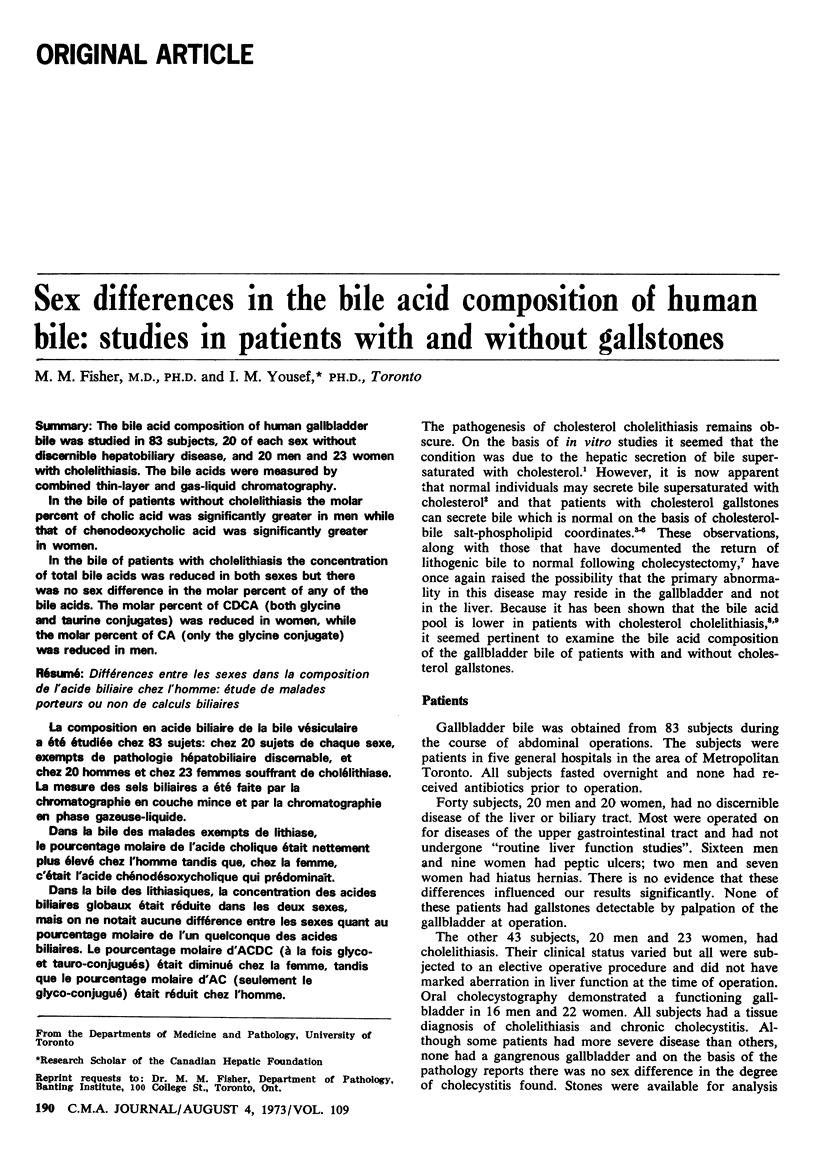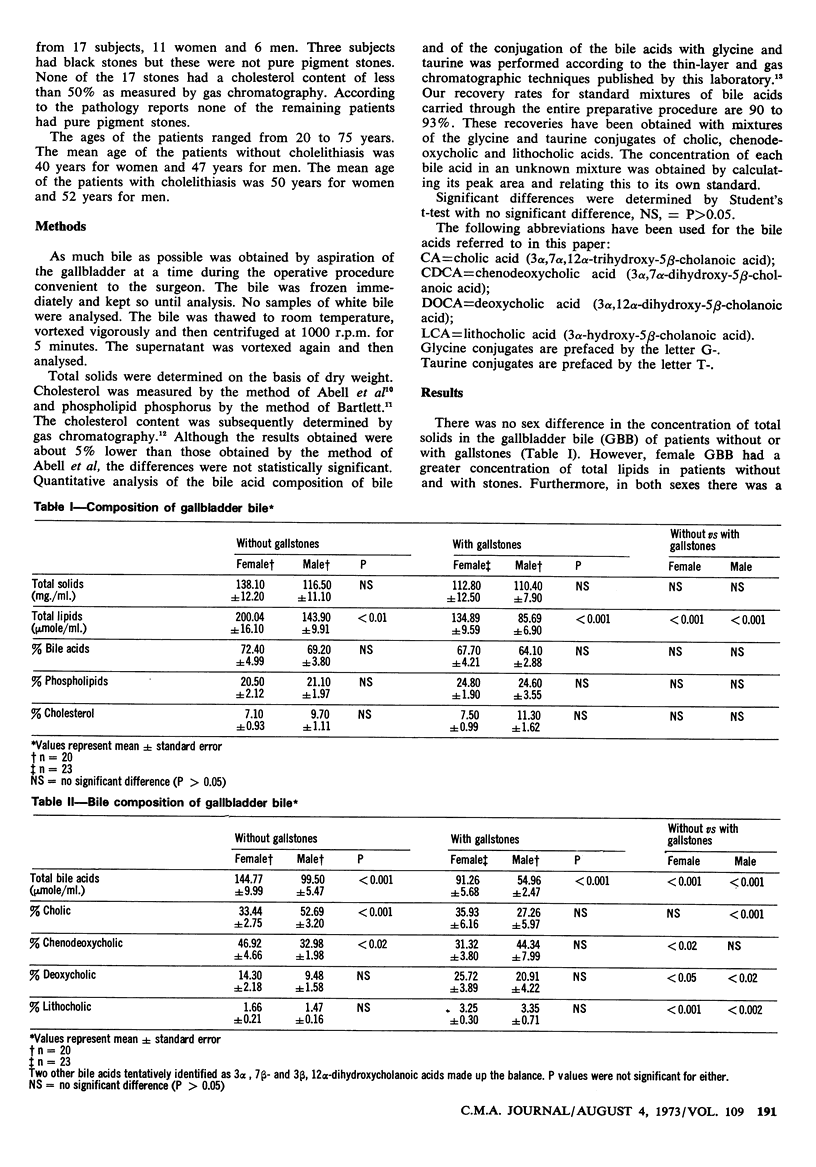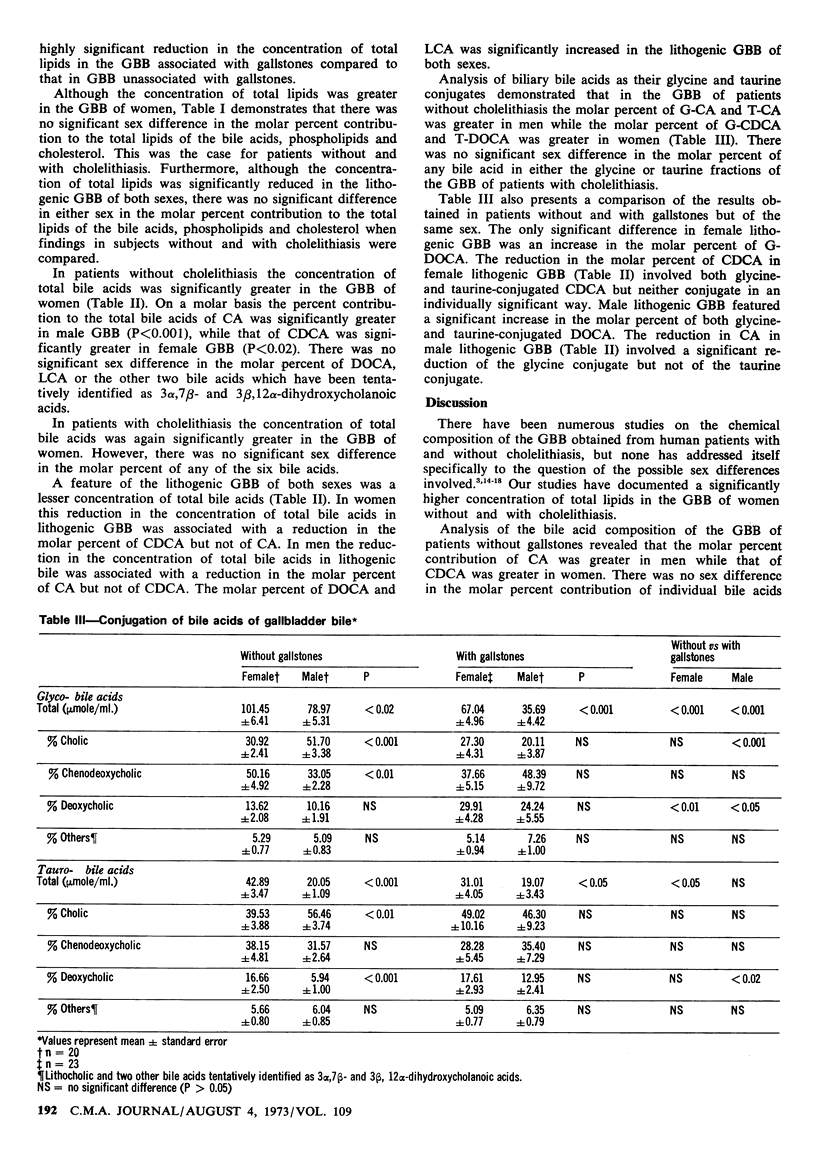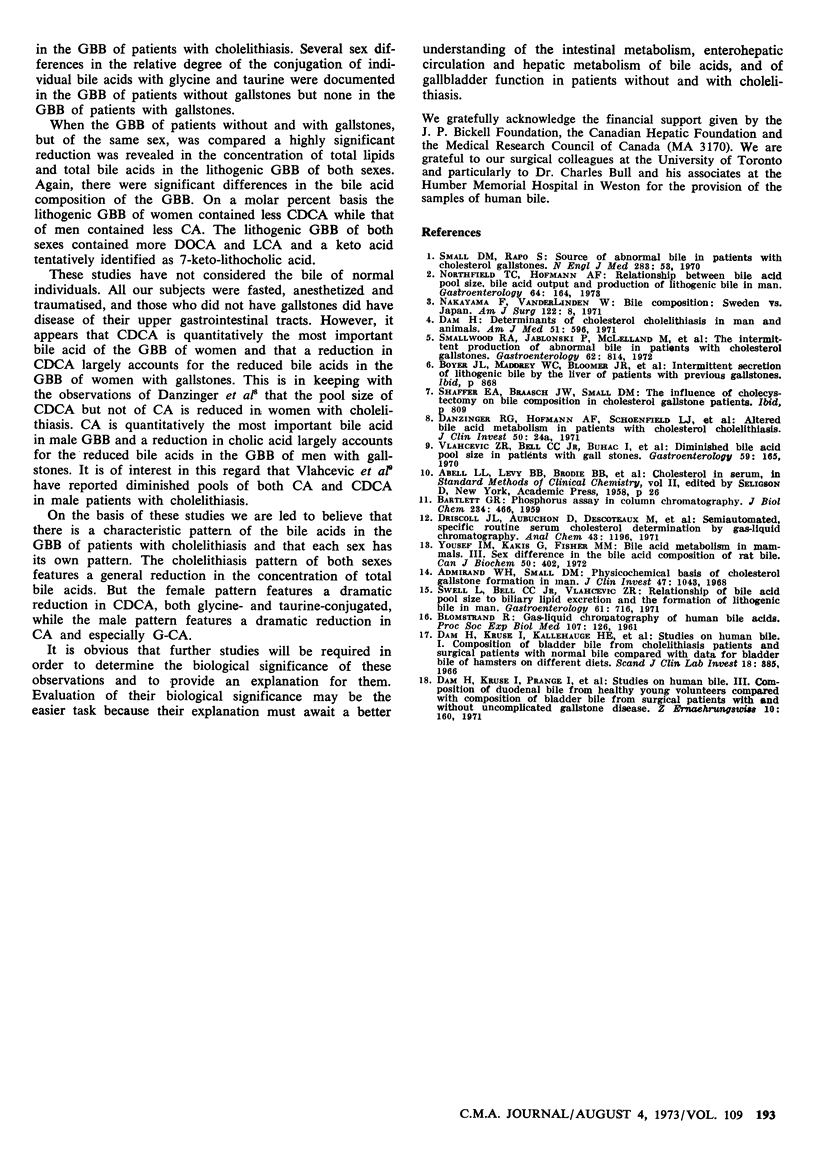Abstract
The bile acid composition of human gallbladder bile was studied in 83 subjects, 20 of each sex without discernible hepatobiliary disease, and 20 men and 23 women with cholelithiasis. The bile acids were measured by combined thin-layer and gas-liquid chromatography.
In the bile of patients without cholelithiasis the molar percent of cholic acid was significantly greater in men while that of chenodeoxycholic acid was significantly greater in women.
In the bile of patients with cholelithiasis the concentration of total bile acids was reduced in both sexes but there was no sex difference in the molar percent of any of the bile acids. The molar percent of CDCA (both glycine and taurine conjugates) was reduced in women, while the molar percent of CA (only the glycine conjugate) was reduced in men.
Full text
PDF



Selected References
These references are in PubMed. This may not be the complete list of references from this article.
- Admirand W. H., Small D. M. The physicochemical basis of cholesterol gallstone formation in man. J Clin Invest. 1968 May;47(5):1043–1052. doi: 10.1172/JCI105794. [DOI] [PMC free article] [PubMed] [Google Scholar]
- Dam H. Determinants of cholesterol cholelithiasis in man and animals. Am J Med. 1971 Nov;51(5):596–613. doi: 10.1016/0002-9343(71)90284-1. [DOI] [PubMed] [Google Scholar]
- Dam H., Kruse I., Prange I., Kallehauge H. E., Fenger H. J., Jensen M. K. Studies on human bile. 3. Composition of duodenal bile from healthy young volunteers compared with composition of bladder bile from surgical patients with and without uncomplicated gallstone disease. Z Ernahrungswiss. 1971 Apr;10(3):160–177. doi: 10.1007/BF02020928. [DOI] [PubMed] [Google Scholar]
- Driscoll J. L., Aubuchon D., Descoteaux M., Martin H. F. Semiautomated, specific routine serum cholesterol determination by gas-liquid chromatography. Anal Chem. 1971 Aug;43(10):1196–1200. doi: 10.1021/ac60304a016. [DOI] [PubMed] [Google Scholar]
- Nakayama F., van der Linden W. Bile composition: Sweden versus Japan. Its possible significance in the difference in gallstone incidence. Am J Surg. 1971 Jul;122(1):8–12. doi: 10.1016/0002-9610(71)90337-0. [DOI] [PubMed] [Google Scholar]
- Swell L., Bell C. C., Jr, Vlahcevic Z. R. Relationship of bile acid pool size to biliary lipid excretion and the formation of lithogenic bile in man. Gastroenterology. 1971 Nov;61(5):716–722. [PubMed] [Google Scholar]
- Vlahcevic Z. R., Bell C. C., Jr, Buhac I., Farrar J. T., Swell L. Diminished bile acid pool size in patients with gallstones. Gastroenterology. 1970 Aug;59(2):165–173. [PubMed] [Google Scholar]
- Yousef I. M., Kakis G., Fisher M. M. Bile acid metabolism in mammals. 3. Sex difference in the bile acid composition of rat bile. Can J Biochem. 1972 Apr;50(4):402–408. doi: 10.1139/o72-054. [DOI] [PubMed] [Google Scholar]


